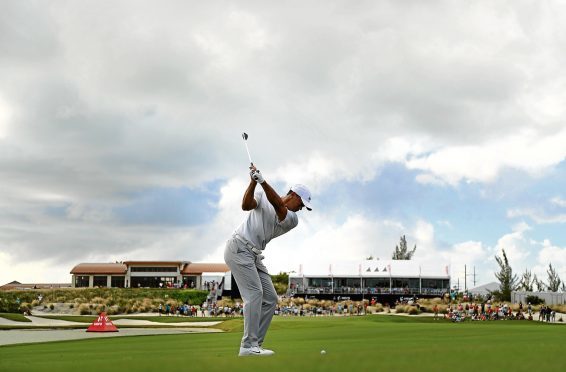My most fervent wish for golf in 2018 – you’re probably tired of hearing already, just three weeks in – is that the sport breaks out of the numbing complacency that’s a accelerated a decline in particpation. Sadly, evidence is we’re still not getting the message.
A survey released by YouGov 10 days ago suggested that the general UK public found golf to be the most boring sport. Indeed, 70 per cent of the 1616 people canvassed expressed this view. Just 11 per cent said golf was exciting.
The reaction of many in the game to this revelation has been downright astonishing, and depressing.
YouGov – admittedly with far from a spotless track record in election predictions, even if that is an entirely different science to this survey – have been basically accused of incompetency.
Others have pointed to the appealing Jordan Spieth, Rory McIlroy, the rise of Jon Rahm and the return of Tiger Woods (all things I’m certainly excited about) and questioned how golf can possibly be boring in such an environment.
Then there’s the fogeys – golf is full of them – who question the brevity of the modern attention span and say the unpopularity of golf is down to the general collapse of society.
There’s those that simply set their face against such a verdict. I saw one correspondent who decried YouGov for the fact that 50 per cent of their respondents were women, claiming this was somehow unrepresentative. I’m sure he thought he was making a salient point.
Or there’s those who love the game and their reaction that this assessment is simply plain wrong.
If I’m in any of these camps it’s probably the last one. Golf takes a bit of work and appeals to those who appreciate the slow burn of a top class golf tournament, the supreme technical skill involved to play the game well and how the game lends itself towards exciting finishes, like the conclusion of the Abu Dhabi Championship at the weekend.
But all that is missing the point. Even if YouGov are halfway incompetent and maybe five per cent out either way, still roughly two-thirds of the public think golf is boring.
That’s a reality we in the game can’t ignore. If the game is to grow and reverse the current decline in participation, simply denying it or arrogantly dismissing it are no kind of options.
Tiger, Rory, Jordan, Lexi, Lydia et al all help. But they’ve all been here for a while – Tiger’s enfofrced absence aside – and it doesn’t seem to have changed the general public perception.
Golf desperately needs more young people to play and it has no choice but to dump its old conservatism and reach out, to new technologies, social media, the innovation that the target audience now choose to use for communication.
Rather than petulantly setting our face against the YouGov survey verdict and lapsing once more into simple denial, golf has to find out why clearly a significant majority of the population think it is boring and how we change that perception.
Tiger’s return should be low expectation
Woods’ return to proper competitive action at Torrey Pines this weekend (even if the competing interest in Dubai looks potentially the better tournament) is the story of the week and will certainly get the sport further up on the sports news bulletins and back pages.
As already noted, this is a grown-ups course compared to his knockabout in the Bahamas before Christmas. Furthermore, Tiger is a long way from tournament sharp, much longer than Rory McIlroy, who ran out of gas in the final round at Abu Dhabi after just a three-month break.
After all the awestruck talk of how good he looks – from usual suspects but also, admittedly, from a few good judges – we’ll get some concrete evidence.
Thankfully, apart for occasional pure marketing, Tiger seems to be a lot more humble than in previous comebacks. Expectations are low, as they should be. He’s played six truly competitive rounds of tournament golf in two and a half years.
Really, if he plays 36 holes without damage, that’ll do for me for now. Making the cut is promising, Anything much better than that will be startling.
Europe are favourites for Paris
The bold claims made for the US team for the Ryder Cup in Paris – ten month in advance – were based on the apparent decline of Europe and their over-reliance on a number of players.
Funny, the weekend victories of Tommy Fleetwood and Jon Rahm, plus Sergio Garcia’s win in the Far East, have silenced a few voices.
The complete domination of the Abu Dhabi leaderboard by Euro team candidates is not at all surprising, of course. They’re used to the course. Just like they’re all very used to Golf National.
The Open de France course will be set up to suit Thomas Bjorn. None of the wide-open, no rough layouts at both Hazeltine and Medinah.
And who is the defending champion at Golf National in June? Why, one Tommy Fleetwood, of course.
